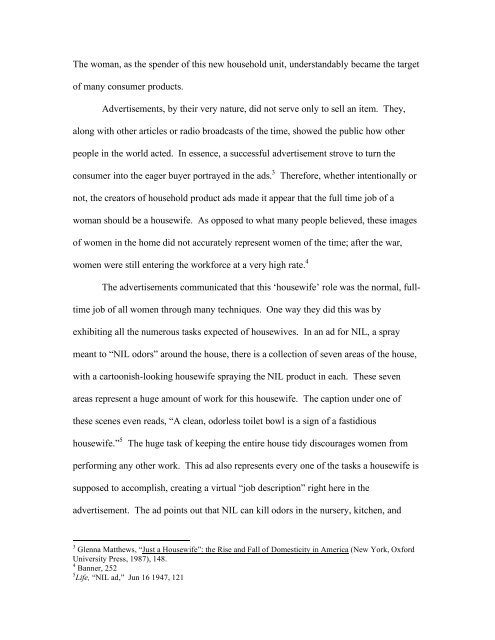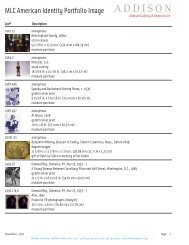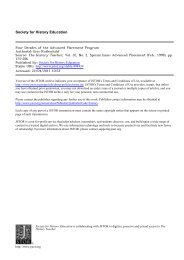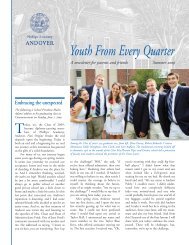The Popularized “Housewife” in Advertisements by Michael Naughton
The Popularized “Housewife” in Advertisements by Michael Naughton
The Popularized “Housewife” in Advertisements by Michael Naughton
You also want an ePaper? Increase the reach of your titles
YUMPU automatically turns print PDFs into web optimized ePapers that Google loves.
<strong>The</strong> woman, as the spender of this new household unit, understandably became the target<br />
of many consumer products.<br />
<strong>Advertisements</strong>, <strong>by</strong> their very nature, did not serve only to sell an item. <strong>The</strong>y,<br />
along with other articles or radio broadcasts of the time, showed the public how other<br />
people <strong>in</strong> the world acted. In essence, a successful advertisement strove to turn the<br />
consumer <strong>in</strong>to the eager buyer portrayed <strong>in</strong> the ads. 3 <strong>The</strong>refore, whether <strong>in</strong>tentionally or<br />
not, the creators of household product ads made it appear that the full time job of a<br />
woman should be a housewife. As opposed to what many people believed, these images<br />
of women <strong>in</strong> the home did not accurately represent women of the time; after the war,<br />
women were still enter<strong>in</strong>g the workforce at a very high rate. 4<br />
<strong>The</strong> advertisements communicated that this ‘housewife’ role was the normal, full-<br />
time job of all women through many techniques. One way they did this was <strong>by</strong><br />
exhibit<strong>in</strong>g all the numerous tasks expected of housewives. In an ad for NIL, a spray<br />
meant to “NIL odors” around the house, there is a collection of seven areas of the house,<br />
with a cartoonish-look<strong>in</strong>g housewife spray<strong>in</strong>g the NIL product <strong>in</strong> each. <strong>The</strong>se seven<br />
areas represent a huge amount of work for this housewife. <strong>The</strong> caption under one of<br />
these scenes even reads, “A clean, odorless toilet bowl is a sign of a fastidious<br />
housewife.” 5 <strong>The</strong> huge task of keep<strong>in</strong>g the entire house tidy discourages women from<br />
perform<strong>in</strong>g any other work. This ad also represents every one of the tasks a housewife is<br />
supposed to accomplish, creat<strong>in</strong>g a virtual “job description” right here <strong>in</strong> the<br />
advertisement. <strong>The</strong> ad po<strong>in</strong>ts out that NIL can kill odors <strong>in</strong> the nursery, kitchen, and<br />
3 Glenna Matthews, “Just a Housewife”: the Rise and Fall of Domesticity <strong>in</strong> America (New York, Oxford<br />
University Press, 1987), 148.<br />
4 Banner, 252<br />
5 Life, “NIL ad,” Jun 16 1947, 121












